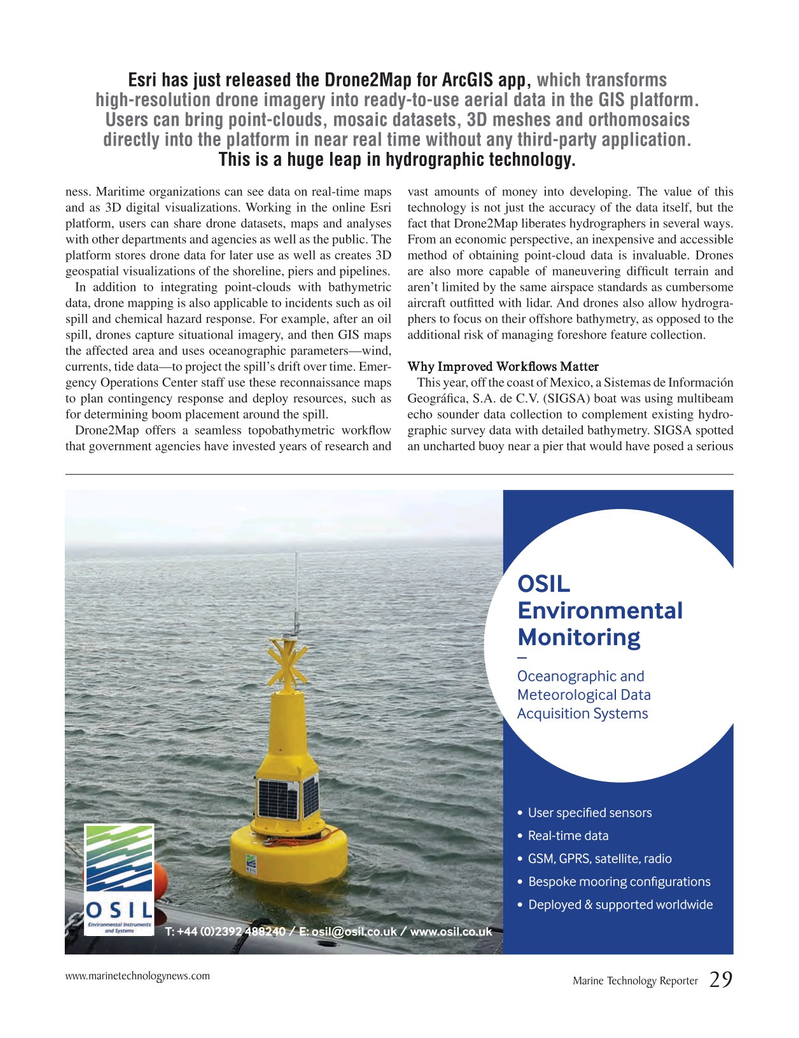
Page 29: of Marine Technology Magazine (September 2016)
Ocean Observation: Gliders, Buoys & Sub-Surface Networks
Read this page in Pdf, Flash or Html5 edition of September 2016 Marine Technology Magazine
Esri has just released the Drone2Map for ArcGIS app, which transforms high-resolution drone imagery into ready-to-use aerial data in the GIS platform.
Users can bring point-clouds, mosaic datasets, 3D meshes and orthomosaics directly into the platform in near real time without any third-party application.
This is a huge leap in hydrographic technology.
ness. Maritime organizations can see data on real-time maps vast amounts of money into developing. The value of this and as 3D digital visualizations. Working in the online Esri technology is not just the accuracy of the data itself, but the platform, users can share drone datasets, maps and analyses fact that Drone2Map liberates hydrographers in several ways. with other departments and agencies as well as the public. The From an economic perspective, an inexpensive and accessible platform stores drone data for later use as well as creates 3D method of obtaining point-cloud data is invaluable. Drones geospatial visualizations of the shoreline, piers and pipelines. are also more capable of maneuvering dif? cult terrain and
In addition to integrating point-clouds with bathymetric aren’t limited by the same airspace standards as cumbersome data, drone mapping is also applicable to incidents such as oil aircraft out? tted with lidar. And drones also allow hydrogra- spill and chemical hazard response. For example, after an oil phers to focus on their offshore bathymetry, as opposed to the spill, drones capture situational imagery, and then GIS maps additional risk of managing foreshore feature collection.
the affected area and uses oceanographic parameters—wind, currents, tide data—to project the spill’s drift over time. Emer- Why Improved Work? ows Matter gency Operations Center staff use these reconnaissance maps This year, off the coast of Mexico, a Sistemas de Información to plan contingency response and deploy resources, such as Geográ? ca, S.A. de C.V. (SIGSA) boat was using multibeam for determining boom placement around the spill. echo sounder data collection to complement existing hydro-
Drone2Map offers a seamless topobathymetric work? ow graphic survey data with detailed bathymetry. SIGSA spotted that government agencies have invested years of research and an uncharted buoy near a pier that would have posed a serious www.marinetechnologynews.com
Marine Technology Reporter 29
MTR #7 (18-33).indd 29 8/25/2016 2:21:19 PM

 28
28

 30
30
